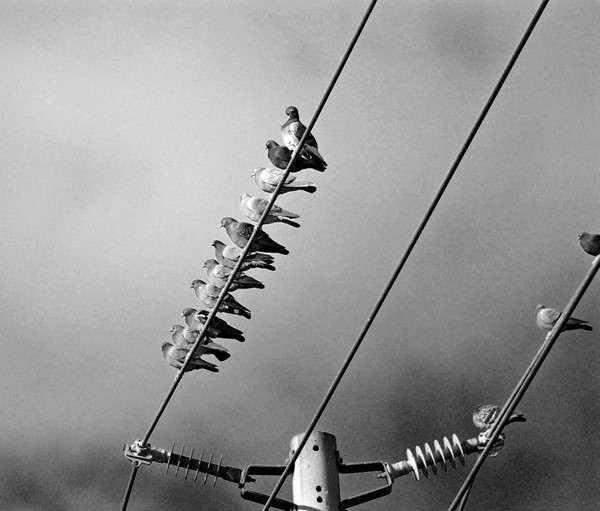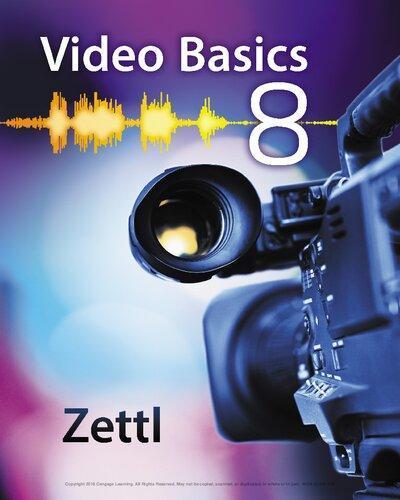



VAT 100-3000 | Intro to Video Technology | Fall 2023 | Prof. Lorraine Singletary
A BMCC OpenLab course site





What is an Analog
An electrical copy of the original stimulus.
The signals are continuous waves. They can represent natural phenomena like sound or light.
Never skip any part of the original signal.
Ex, somebody singing into a microphone.
What is Digital
Digital is a series of 1’s and 0’s.
A digital signal is discontinuous.
Digital signals can be compressed, and analog signals cannot.
Codecs
Codecs are compressions and decompressions systems.
For example:
Quicktime has its own codecs for sending files over the internet.
Apple has its own codecs.
Why Digital?
Unlimited copies with the last one looking just as good as the original.
You can compress signals to save storage space.
Allows you to manipulate pictures and sound in a controlled way.
Downloading and Streaming
Downloading means files are sent as data packets that are often out of order.
Streaming means you can open the file and listen while the data delivery is still in progress.
The Pros & Cons Of Film Vs Digital
Hollywood utilized analog cameras for a very long period because the filmmakers loved the aesthetic appeal of chemical film, and the image quality was unmatched for a very long time.
Film stock is a physical analog medium used for recording images made from celluloid and coated with light-sensitive gelatin emulsion. Light is used to capture an image onto the film; it is later developed under a specific chemical process and produces the images. Film stock comes in different sizes and styles; they are also differentiated by their chemical make-up, size of film grain, and color retention.




Video Basics, 8th Edition
Author: Herbert Zettl
Publisher: Wadsworth Cengage Learning
ISBN-10: 9781305950863 ISBN-13: 978-1305950863
History of Films/Cameras
Early on 1800’s there were only stills/pictures. Eastman Kodak developed the first celluloid film. However, there were no motion film or movies.
In the 1870’s Eadweard Muybridge experimented with moving images / motion (horse legs in motion).
Persistence Of Vision
Persistence of vision is the optical phenomenon where the illusion of motion is created because the brain interprets multiple still images as one. When multiple images appear in fast enough succession, the brain blends them into a single, persistent, moving image.
Thomas Edison and William Kennedy Dickson invented the first early motion picture camera.
How do cameras work?
Video cameras transduce (translate) the optical image that the lens sees into a video picture. Essentially, the camera converts the optical image into electrical signals that’s read by a television receiver.
How does this occur?
Light that bounces off an object passes through the lens, that light is turned into an electrical charge that hits the camera’s video sensor. This results in the camera’s video image.
How are video images formed?
The basic video image is composed of many tiny dots called pixels (picture elements). They are arranged in a stack of vertical and horizontal lines.
To produce the image the pixels have a mixture of primary colors called RGB (red, green, blue).
Pixels are scanned when they receive an electrical charge. The scanning cycle is either “progressive or interlaced.”
Progressive scanning: Pixels are scanned from left to right from the top to the bottom completing a video image.
Interlaced scanning: Pixels are scanned by every other line (skips a line), reading only the odd numbers. The next scan reads the even numbers and a complete picture is produced.
SD VS HD
In video or digital photography, the resolution is the ability of a video or digital camera to record details, such as the number of pixels and their size.

DUE: November 21st, 2023
(1 to 2 pages, double-spaced, 12 point font)
For this assignment, you will choose a short film clip (no more than 3 minutes) and analyze it in terms of its composition, lens choice, lighting, depth of field and use of color. What can you tell about the framing, camera placement, shot sizes, camera height? What type of depth of field: shallow or great? What type of lighting: was it high key or low key? What can you tell about the shadows? The use of color? Most importantly, why were those choices made, in your opinion? What were the filmmakers going for? What were they trying to express?
Please go to YouTube, select a scene and post the link on Blackboard along with your analysis.
You will also present part of the scene in class. Make sure you clip is accessible on the day of the presentation. Each of you will have 3-5 minutes to show part of the clip and present your findings. There will be time for one or two questions after each presentation.
DUE: January 9, 2024
Pick from the list 3 themes. You will take 3 images of each theme and create a “Look Book” of Visual Language. Archive each assignment in a separate folder for each theme.
All of the folders should be in one folder entitled: “Visual Language Look Book.” You will present this in class towards the end of the semester.
Examples of each theme can be seen below.
Themes
1 – Repetition
2 – Leading Lines
3 – Unique Shapes
4 – Shadows
5 – Architecture
6 – Landscape – Panoramas
Pre Production – Planning stage
Director – Creative, Turns scripts into movie, test shooting
Director of Photography – Creative, Responsible for the look of the film.
Script Writer – Write the film
Producer – Handles the business side. Responsible for hiring, firing, budget, insurance
Location Scout – Find great locations to shoot
Production – Filming stage
AD (Assistant Director) – Director’s right hand. Keeps the set running smoothly.
Director of photography or Cinematographer – Head of camera department. Creates the look as far as lighting, composition, etc.
Camera Dept – Gaffer – Head electrical, 1st asst. 2nd asst
Grips – Move equipment
Production designer – Set design. Works with props, creates atmosphere for film. Hair, makeup, wardrobe.
Post Production – Editing, finishing touches
Editing film – Cut footage together
Color correction – Fix any color issues
Color grading – Create a special look / mood / theme
Sound mixing- Calibrate audio levels, combine diifferent sources of audio
Sound design – sound effects, score, soundtrack, etc
Graphics
Production Crew Members

At the start of a project, they are responsible for reviewing and interpreting scripts, establishing the film’s tone, and choosing their assistant directors. Directors then begin working with other department heads on set, including those involved with casting, design, and camera work.
The director of photography (also known as DP or cinematographer) works with the director to design each shot and makes decisions on what lens, filter, and lighting to use to achieve the desired look of the project. They are responsible for both the artistic and technical details involved when filming. The DP is often the second most senior member of a production crew behind the director and oversees the camera and lighting crews.
While filming, the camera operator is the person who physically controls and moves the camera. They work with the director of photography to ensure each shot meets the director’s vision. Stand-Ins work closely with the director of photography, camera operator, and assistant cameras. If you’re booked as a Stand-In, it’s a good idea to get to know the camera crew on set.
First assistant cameras (1st AC or focus puller) are responsible for maintaining and pulling focus while filming a scene. They also put together the camera at the beginning of the day and take it apart when filming has finished.
The second assistant camera (2nd AC) labels and operates the clapper/slate for every take. When shooting on film, it’s their job to load and unload the film in the camera. They also maintain the records and paperwork of the camera crew.
A grip is a technician on a production crew who is responsible for building and maintaining camera and lighting set-ups. They assemble and build the dollies, tracks, cranes, and other equipment needed to film a shot. There are different kinds of grips, including the key grip who is the head of set operations and dolly grips who operate camera dollies and cranes.
The gaffer is the lead technician of a production crew and is responsible for all the lighting set-ups for filming. While the director of photography is in charge of creating the project’s overall aesthetic, the gaffer finds a way to make their vision a reality.
As part of the sound department, the main responsibility of the boom operator is to hold the boom mic (a long pole with a microphone attached) near the actors, but out of view of the camera. When needed, they also place microphones on the actors or around the set.
The production designer’s job is to create the overall visual aesthetic of a TV show or movie, including the set designs and costumes. They work with the director and DP to visualized the desired look of the production.
It’s the script supervisor’s job to maintain the continuity of the production. They take notes on every shot, keeping track of blocking, props used, and other details to make sure everything is the same from shot to shot. If there are inconsistencies, the script supervisor will tell the director so they can reshoot the scenes.
Knowing the on-set production crew members will help you be successful when you’re booked by Central Casting. Want to know what else you can do to be a pro on set? Know these common production terms and find out what dress codes really mean so you can show up with the perfect wardrobe.
Source: https://www.centralcasting.com/production-crew-members-you-should-know/?location=newyork